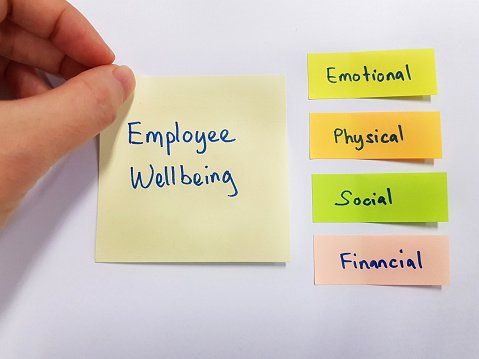We all know that a happy and motivated workforce is good for business. But investing in employees is about more than how much you pay them or the benefits they receive - it's also about their overall well-being.
Employers are starting to recognize that investing in the well-being of their employees isn't just the right thing to do, but it also has a positive effect on the company's bottom line.
The reality is, it's much cheaper for you to invest in improving your employees' well-being than face the expenses that result from employees who are less productive and engaged.
Below, we'll look at how employee well-being is defined, the significant impact it can have on a company's performance, and why it's a wise investment for employers to make.
Employee well-being is a form of investment in an organization's employees. At its core, it's about encouraging employees to look after their health by giving them the tools they need to do so. A successful employee well-being program also aims to increase employee engagement, job satisfaction, and productivity.
According to the
CDC, employers who support employee health typically see more employees at work each day. Not only does this directly impact a company's productivity, but high levels of absenteeism can also have negative effects on workplace culture.
By improving employee well-being, employers benefit by having a more dedicated and loyal workforce. In addition, employers can recognize a
31% increase in productivity when their employees are happy.
For employers to develop a strong well-being program, they need to understand their employees' challenges and how they can help. Mental health and physical health are deeply intertwined, and employers should identify ways to support their teams in both areas.
Employee mental health is an area that many employers overlook. According to the
World Health Organization's study on mental health in the workplace, depression and anxiety may be costing the global economy up to one trillion dollars each year.
Employers need to be aware of how mental health affects their staff and take action through mental health benefits. By doing so, mental health becomes an integral part of well-being. An effective mental health plan aims to reduce stigma around mental health issues, provide employees with assistance for their mental health, and educate them on how to take steps for self-care.
The WHO also reports that $1 spent treating common mental disorders can lead to a $4 return in health and productivity. So not only is investing in employees' mental health a great thing to do, but it also benefits your business's bottom line.
Many employers have relied on their employees to take care of their own health needs in the past. But as we look at how employee well-being can impact the workplace, it becomes clear that employers need to provide resources that encourage and support their teams in maintaining overall physical health.
Employee benefits can be designed to encourage good physical health through offering healthy food options in the workplace, providing gym memberships to staff, coordinating organization-wide fitness challenges, and giving staff time to exercise during their workday.
An employee well-being plan should also support employees in maintaining their health by providing sick leave for illness, offering a leave in times of need, and reducing
workplace stress as much as possible.
While there are many benefits to investing in employee well-being, there are also a few challenges that employers should be prepared for.
Employers need to find a balance between maintaining a productive workplace and encouraging employees to take care of themselves. By putting employees first as much as possible, employers will promote employee engagement, satisfaction, and productivity.
To support employees in taking care of their mental and physical health, employers should help them along with resources. For example, employees who have time to exercise, have healthy food options at the workplace, and have a positive working environment are more likely to feel empowered to take care of their own mental and physical well-being.
Employee wellness resources should be well-known and easily accessible. Employers need to make sure their teams understand the mental and physical health resources available to them and how to access them. Employees who are unaware of these things won't be able to take advantage of them.
An employee wellness plan should start strong with the support of the company's leaders, but it's just as important to keep the momentum going over time. Employees aren't likely to feel motivated by the wellness programs if they stop seeing the benefits on a day-to-day basis.
Employers who invest in the mental and physical health of their employees can look forward to:
An investment in employee well-being is an investment in the overall morale of your team. Employees who feel that their employers care about their well-being will be motivated to work harder for them.
Unhappy workers are quick to jump ship when they find another job, so keeping your workforce happy should be a priority for any business. Introducing employee wellness can help increase retention rates by ensuring that you're keeping your valuable team members healthy and happy.
Reducing absenteeism is another benefit for employers who invest in employee well-being. By providing resources that promote overall physical and mental health, employers can help employees stay healthy, decreasing the time they need to take off unexpectedly.
Helping employees reduce their stress levels can lead to more high-quality work. Employees who feel supported and healthy will be better able to focus on their job responsibilities.
In today's tight labor market, employers have to work hard to attract top talent. Hiring from a pool of candidates motivated by your employee offerings can help you get ahead of the competition and retain new employees for years to come.
If you're ready to build a culture that engages and empowers employees,
IdealOutcomes is here to help. We're passionate about helping businesses maximize their most important asset - people.


